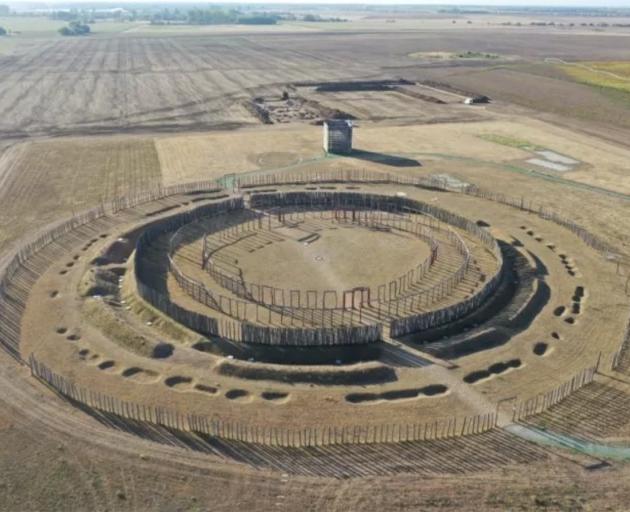Lifestyle
Unveiling Prehistoric Sites: Similarities Between Stonehenge and Pömmelte

Recent archaeological findings suggest striking similarities between the ancient sites of Stonehenge in England and Pömmelte in Germany. Both locations, dating back approximately 4500 years, serve as important centers for prehistoric rituals, particularly those related to solar observations.
Stonehenge, famously associated with the tragic character Tess of the d’Urbervilles from Thomas Hardy’s novel, has long captivated visitors with its monumental Sarsen stones. Although access to the stones is now limited for safety reasons, their historical significance remains undiminished. This iconic site likely served as a gathering place, reflecting the prehistoric community’s fascination with the sun’s annual movements.
Excavations at Pömmelte have revealed a circular ditch enclosing two rings of small circles. Initially thought to be mere outlines, these circles were discovered to contain holes for massive oak posts, suggesting a similar purpose to that of Stonehenge. What sets Pömmelte apart is that its oak posts were likely transported via the nearby Elbe River, contrasting with the stones of Stonehenge, which were transported from distant quarries.
Comparative Significance of Ancient Sites
Both Stonehenge and Pömmelte were constructed around the same period and share architectural similarities. Stonehenge is part of a larger ritual complex that includes the renowned Silbury Hill, a 40-meter-high structure comparable in volume to the Egyptian pyramids. The purpose of Silbury Hill remains a mystery, leading to speculation about the potential burial of a significant prehistoric figure within its confines.
In contrast, Pömmelte features an extensive settlement of approximately 140 long houses, each capable of housing multiple generations, highlighting a more complex societal structure than what is observed at Stonehenge. This suggests that Pömmelte was not only a ceremonial site but also a vibrant community hub.
Visitor Engagement and Cultural Insights
Today, Pömmelte attracts around 40,000 visitors annually, drawn by its reconstructed site and the allure of ancient history. Visitors depart with a deeper understanding of a widespread prehistoric cult that celebrated the sun, akin to the grand medieval cathedrals of Europe.
Both sites illustrate the interconnectedness of ancient cultures across Europe, revealing a shared reverence for solar phenomena. As researchers continue to explore these significant historical landmarks, the narrative of human development and ritual practices during the prehistoric era becomes increasingly rich and complex.
-

 Sports1 month ago
Sports1 month agoNetball New Zealand Stands Down Dame Noeline Taurua for Series
-

 Entertainment1 month ago
Entertainment1 month agoTributes Pour In for Lachlan Rofe, Reality Star, Dead at 47
-

 Sports1 month ago
Sports1 month agoSilver Ferns Legend Laura Langman Criticizes Team’s Attitude
-

 Entertainment1 week ago
Entertainment1 week agoNew ‘Maverick’ Chaser Joins Beat the Chasers Season Finale
-

 Entertainment2 months ago
Entertainment2 months agoKhloe Kardashian Embraces Innovative Stem Cell Therapy in Mexico
-

 Sports2 months ago
Sports2 months agoGaël Monfils Set to Defend ASB Classic Title in January 2026
-

 World3 months ago
World3 months agoPolice Arrest Multiple Individuals During Funeral for Zain Taikato-Fox
-

 Politics2 weeks ago
Politics2 weeks agoNetball NZ Calls for Respect Amid Dame Taurua’s Standoff
-

 Entertainment3 weeks ago
Entertainment3 weeks agoTyson Fury’s Daughter Venezuela Gets Engaged at Birthday Bash
-

 Sports3 weeks ago
Sports3 weeks agoHeather McMahan Steps Down as Ryder Cup Host After Controversy
-

 Entertainment3 weeks ago
Entertainment3 weeks agoTyson Fury’s Daughter Venezuela Gets Engaged at Birthday Bash
-

 World2 weeks ago
World2 weeks agoNew Zealand Firefighters Plan Strike on October 17 Over Pay Disputes





















